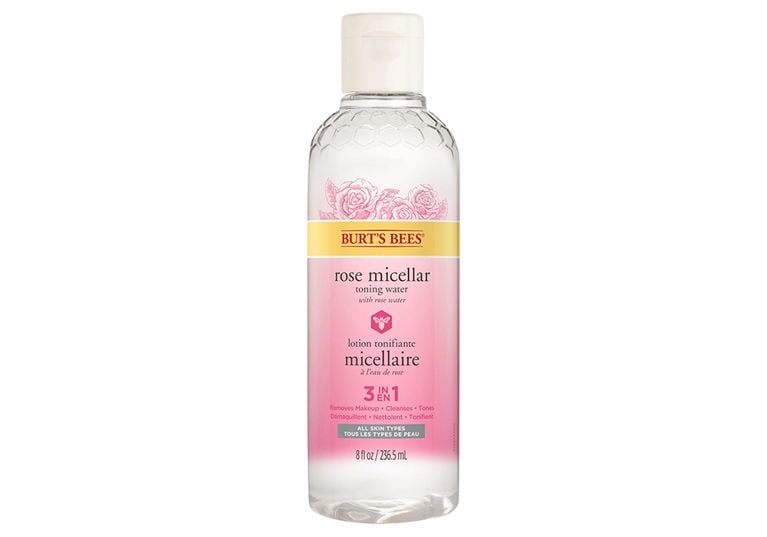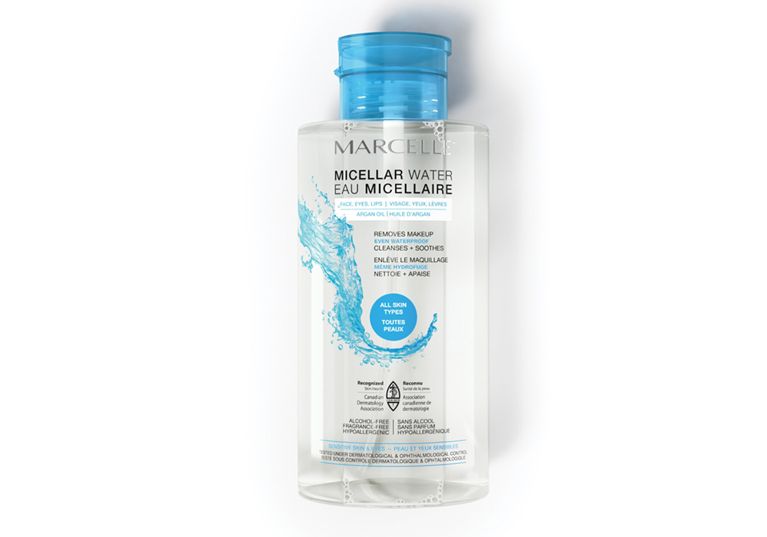What Is Micellar Water And How Should You Use It?

What is micellar water?
Micellar water a multi-use cleansing product made of purified water and micelles. Dr. Katie Beleznay, a Vancouver-based dermatologist and clinical instructor at the Department of Dermatology at the University of British Columbia, explains that micelles are molecules which group together and attract dirt and oil. “When you wipe a cotton ball soaked with micellar water along your face, the micelles adhere to the cotton while pulling makeup, sebum, and other impurities off the skin,” she says. Notably, micellar solutions are gentler than traditional foaming cleansers.
How do you pronounce micellar water?
My-sell-er. Micellar. That’s all there is to it!
Why is micellar water so popular?
This product is lauded as a one-step solution that removes makeup, cleanses and tones the skin—without the need to add water. The product was traditionally popular with French women, who began using it in the 1900s before tap water was easily accessible. “Micellar formulas are gentle so there's no need to rinse them off, allowing the moisturizing ingredients to stay behind and be absorbed by the skin,” says Beleznay. As a result, makeup artists everywhere came to love it for its simplicity and efficiency. Consumers love it because it's gentle and has the consistency of water. “Oftentimes, people who like [micellar] dislike the feeling of residue on their skin or are afraid of being oily,” explains makeup artist Christine Jairamsingh.
How is micellar water different from makeup remover?
Until recently, heavy-duty makeup removers were known to be oily, but the arrival of micellar solutions to North America really shook things up. Most variations are also gentle enough to be used as eye makeup remover and won't sting your peepers. Still, Jairamsingh warns against the catch-all product mentality. “It’s not necessarily going to get it all off for waterproof products or for foundations that are really full coverage, thicker, or high in silicone content,” she says. “In that case, use micellar water initially to chip away at it, then go in with an oil cleanser that you love.”
Can I use micellar water as a facial cleanser?
Micellar solutions can be used in place of cleansers and toners (which rebalance your skin’s pH levels, clean off residual dirt and oil, and tighten the appearance of pores)—Beleznay points out that micellar water actually has benefits over toner, because it doesn’t contain alcohol, which can sting or dry out your skin. “Depending on the person and whether they wear makeup or not, some people may get away with just micellar water; however, others use it as a makeup remover and use a cleanser after for further benefit,” she says. Both Beleznay and Jairamsingh warn that not removing your makeup properly can lead to breakouts, so consider that before replacing an elaborate skincare routine with just micellar water.
Are there natural alternatives to micellar water?
Jairamsingh advocates for natural plant-based alternatives (such as Wildcraft’s Cleanse Makeup Remover), which functions in the same way—without the added preservatives. Beleznay emphasizes that regardless of what you do, “it is always a good idea to apply moisturizer [afterwards].”
Below, some of our favourite picks.
Garnier SkinActive
Water Rose Micellar Water, $9, walmart.ca.

GET CHATELAINE IN YOUR INBOX!
Subscribe to our newsletters for our very best stories, recipes, style and shopping tips, horoscopes and special offers.














